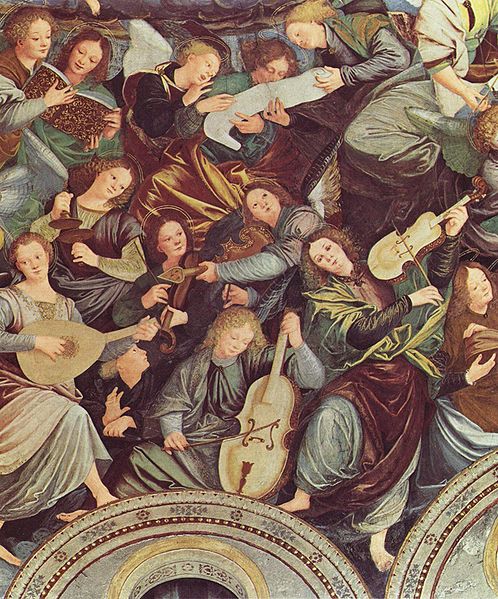The string section is composed of bowed instruments belonging to the violin family. It normally consists of first and second violins, violas, cellos, and double basses. It is the most numerous group in the standard orchestra. In discussions of the instrumentation of a musical work, the phrase "the strings" or "and strings" is used to indicate a string section as just defined. An orchestra consisting solely of a string section is called a string orchestra. Smaller string sections are sometimes used in jazz, pop, and rock music and in the pit orchestras of musical theatre.
The Chicago Symphony Orchestra performing with a jazz group. The string sections are at the front of the orchestra, arrayed in a semicircle around the conductor's podium.
The violin, colloquially known as a fiddle, is a wooden chordophone, and is the smallest, and thus highest-pitched instrument (soprano) in regular use in the violin family. Smaller violin-type instruments exist, including the violino piccolo and the pochette, but these are virtually unused. Most violins have a hollow wooden body, and commonly have four strings, usually tuned in perfect fifths with notes G3, D4, A4, E5, and are most commonly played by drawing a bow across the strings. The violin can also be played by plucking the strings with the fingers (pizzicato) and, in specialized cases, by striking the strings with the wooden side of the bow.
The cupola of Madonna dei Miracoli in Saronno, Italy, with angels playing violin, viola, and cello, dates from 1535 and is one of the earliest depictions of the violin family.
1658 Baroque violin by Jacob Stainer
The construction of a violin
Closeup of a violin tailpiece, with a fleur-de-lis





